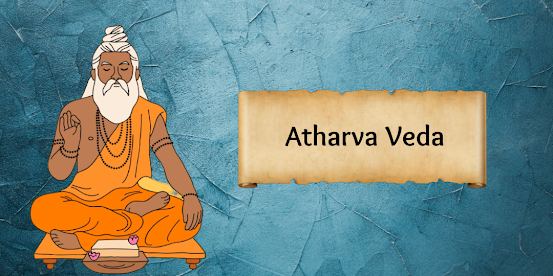Have you ever wondered how ancient texts Like Veda can still hold relevance in our lives today? The Atharva Veda, one of the four Vedas in Hinduism, gives us an interesting look at the spiritual and practical insights of ancient India.
Written between 1200 and 900 BCE, it’s different from the other Vedas because it emphasizes not just rituals but also healing, ethics, and everyday living. Its verses include a wide range of rituals, from significant life events to healing ceremonies, reflecting the cultural richness of early Indian society.
This Veda has had a big impact on Indian culture, influencing Ayurveda and community rituals that are still relevant today. Its hymns and spells are thought to have the ability to drive away evil, heal illnesses, and bring success in both personal and community efforts.
Explore the Atharva Veda: Rituals, Remedies, and Cultural Significance Through This Blog
By looking into its vibrant past and cultural influence, we reveal age-old teachings that help us achieve a balanced and harmonious way of living. Let’s take this journey together to uncover the powerful lessons of the Atharva Veda and how they can inspire us in our everyday lives.
Historical Significance of the Atharva Veda
The Atharva Veda, written between 1200 and 900 BCE, is an important piece of ancient Indian literature that provides a fresh perspective on early Vedic civilization.
Unlike the other three Vedas that mainly focus on rituals, the Atharva Veda explores the daily lives of people, showcasing their beliefs, customs, and social dynamics. It serves as a historical document that captures the cultural and spiritual essence of ancient India.
The hymns in this Veda touch on various topics like healing, protection, and ethical living, giving us a glimpse into how ancient Indians made sense of their world.
By exploring the Atharva Veda, we gain valuable knowledge about early medicinal and community rituals that have played a significant role in shaping Indian culture over the years. This historical importance makes it more than just a religious text; it’s a vital resource for understanding the development of societal norms and values in ancient India.
Read more about the Vedas – https://itihaaskikhoj.in/4-vedas-the-pillars-of-indian-knowledge/
Structure and Composition of the Atharva Veda
The Atharva Veda consists of twenty books, known as Kandas, featuring around 730 hymns and about 6,000 verses. This varied collection combines prose and poetry, touching on everything from healing practices to ethical values.
Each hymn has its own purpose, whether it’s calling on gods for safety or offering cures for illnesses. The way it’s organized shows its diverse nature; some hymns are very spiritual, while others are more down-to-earth, giving advice for everyday life.
.jpg=w74-h74-p-k-no-nu)
This arrangement makes it easy for readers to navigate its lessons and incorporate them into their lives.
The Atharva Veda stands out from the other three Vedas by serving as a guide for both spiritual enlightenment and practical knowledge. Understanding how it’s structured helps us appreciate the vast knowledge within this ancient work.
Read – https://itihaaskikhoj.in/exploring-hinduism-the-worlds-oldest-religion/
Healing Practices in the Atharva Veda
A key highlight of the Atharva Veda is its strong emphasis on healing techniques and medicinal knowledge. The hymns are filled with all sorts of remedies for different health issues, using herbs, rituals, and chants that show an early understanding of medicine.
Many scholars consider this Veda to be a precursor to Ayurveda, India’s traditional medical system that focuses on holistic well-being.
The Atharva Veda acknowledges the connection between body, mind, and spirit, promoting a balanced health approach that includes both physical and spiritual remedies.
 For example, some hymns are specifically aimed at curing diseases or protecting people from negative influences. These practices showcase an ancient belief in the power of words and rituals to affect health.
For example, some hymns are specifically aimed at curing diseases or protecting people from negative influences. These practices showcase an ancient belief in the power of words and rituals to affect health.
By looking into these healing customs in the Atharva Veda, we can better understand how ancient Indians viewed health and wellness long before the advent of modern medicine.
The focus of the Vedas on natural remedies like herbs and minerals reveals an early awareness of the healing powers of plants. These hymns not only give useful advice but also stress the importance of a spiritual approach to health, encouraging folks to stay in tune with the universe for their well-being.
Also, read about the importance of Mantras – https://itihaaskikhoj.in/mantra-power-mantras-for-spiritual-growth-and-clarity/
Magical Spells in the Atharva Veda
The Atharva Veda is well-known for its collection of magical spells that aim to bring protection and prosperity across various life aspects. These spells are meant to keep evil at bay, attract good luck, and help people achieve their personal goals.
 Magic was a significant part of ancient Indian culture, and these spells were tools for individuals wanting to take control of their lives. Many hymns call on deities or natural forces to channel positive energy and eliminate negativity.
Magic was a significant part of ancient Indian culture, and these spells were tools for individuals wanting to take control of their lives. Many hymns call on deities or natural forces to channel positive energy and eliminate negativity.
For example, there are spells specifically for love, wealth, and peace, reflecting what people commonly desire. The magical aspect of the Atharva Veda shows how spirituality was woven into everyday life back then.
Plus, the way the Atharva Veda approaches magic highlights a balanced connection between humans and the universe, suggesting that our intentions can influence our environment.
 This blend of spirituality and practicality not only brought comfort to individuals but also created a sense of community through shared rituals and beliefs.
This blend of spirituality and practicality not only brought comfort to individuals but also created a sense of community through shared rituals and beliefs.
Therefore, the teachings of the Atharva Veda continue to be significant, encouraging us to know more about our spiritual paths while recognizing the importance of intention in our everyday lives.
Ethical Principles in the Atharva Veda
The Atharva Veda isn’t just about healing and magic; it also lays down some solid ethical guidelines for living a good life. It talks about values like truth, integrity, compassion, and justice—things that are important no matter the culture or time period.
The Veda also stresses the need for harmony in society and supports social welfare by advocating for equality among individuals. These ethical lessons push people to think about how their actions affect others and promote a sense of responsibility within the community.
 When we talk about dharma, or our duty to do what’s right, it really encourages us to act with honesty in everything we do. It’s all about understanding that our personal ethics can help the greater good.
When we talk about dharma, or our duty to do what’s right, it really encourages us to act with honesty in everything we do. It’s all about understanding that our personal ethics can help the greater good.
The Veda also emphasizes how everything is linked together, reminding us that our actions can have a big impact on ourselves, our communities, and the environment.
By taking these teachings to heart, we can build a culture of empathy and respect, which can lead to a more just and caring society
Cultural Impact of the Atharva Veda
The Atharva Veda has had a huge influence on Indian culture throughout the centuries. Its teachings have shaped not just religious practices but also various art forms, like music and dance, that draw from its hymns.
Many rituals that come from this Veda are still part of important life events like weddings and funerals today. Plus, its focus on health has made a mark on traditional Indian medicine, especially Ayurveda, which uses its herbal remedies and holistic wellness ideas.
 Moreover, the philosophical ideas found in the Atharva Veda have influenced later Hindu texts and spiritual traditions, keeping its teachings relevant even today. By recognizing its cultural significance, we can see how this ancient text continues to resonate with modern values and enriches India’s diverse heritage.
Moreover, the philosophical ideas found in the Atharva Veda have influenced later Hindu texts and spiritual traditions, keeping its teachings relevant even today. By recognizing its cultural significance, we can see how this ancient text continues to resonate with modern values and enriches India’s diverse heritage.
Also, read – https://itihaaskikhoj.in/the-ganges-a-divine-journey-through-hindu-history/
Conclusion
A journey through the Atharva Veda reveals a rich array of rituals, remedies, and ethical teachings that have played a crucial role in shaping Indian culture for centuries. This sacred text offers deep insights into healing practices and magical spells, while also emphasizing the moral values necessary for a harmonious life. Its influence stretches beyond spirituality, impacting various elements of everyday life, including medicine, artistic activities, and social values. We hope you’ve liked the blog!

